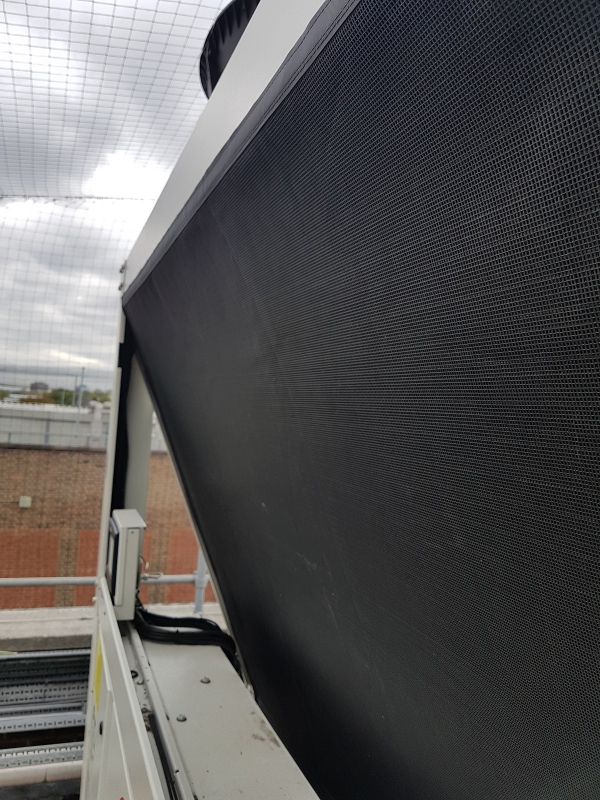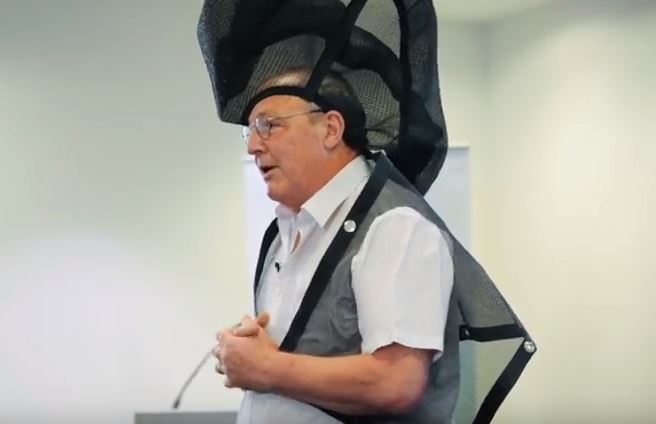- Contact 0870 350 7767
- |
- Advertise
Home > RAB Specialist Engineers Limited > How does a chiller work?
How does a chiller work?
 News and PR from RAB Specialist Engineers Limited - Published 12 March 2018
Industrial chillers have a simple purpose: To remove heat from something and to deposit it somewhere else.
News and PR from RAB Specialist Engineers Limited - Published 12 March 2018
Industrial chillers have a simple purpose: To remove heat from something and to deposit it somewhere else.
This process, known as cooling, has a wide range of industrial applications, from keeping machinery operating at a consistent temperature to its use in air conditioning systems.
In most cooling applications, chillers use a pump to circulate cool water or refrigerant to whatever it is designed to cool. This liquid then removes any heat from the process (the system or machine it is cooling) and returns to the chiller, which is how the heat transfer takes place.
The type of refrigerant that used depends on the application and the temperatures required. They all work in loosely the same way though. Using a compressor and phase-change (changing a liquid to a gas in this instance, without changing its chemical composition). The process of changing refrigerant from a gas to a liquid, and back again, is known as the refrigeration cycle.
The refrigerant cycle starts with the compressor taking low temperature and pressure vapour and compressing it into high temperature / high pressure vapour. The vapour then moves onto the condenser. Using forced air movement or cooled regulated water the vapour is condensed into a saturated liquid which then moves down the liquid line through a receiver and drier to the expansion valve. The expansion valve will regulate the flow of the saturated refrigerant into the evaporator using its orifice, which will dramatically reduce the temperature of the refrigerant as it enters the evaporator. At this point the heat from the process is transferred into the refrigerant (heat exchange). As the refrigerant is absorbing the heat rejected from the process it evaporates back into a vapour and is returned to the compressor. This completes the cycle.
The main components of a chiller:
Condenser
The condenser uses a process of forced air movement or flow-regulated water to condense the refrigerant into a saturated liquid this then passed through the liquid line and into the expansion valve.
Note: If the condenser gets blocked, the refrigerant won't be fully saturated. You may find that you have flash gas at the expansion valve, which will cause a dramatic reduction in the efficiency of the cooling.
Compressor
The compressor takes cool, low-pressure vapour refrigerant and compresses it, increasing the pressure and so that it becomes hot vapour.
Evaporator
The evaporator is used to cool the water or air to deliver process cooling or air conditioning. As refrigerant is forced through the expansion valve orifice and into the evaporator, it enters the sub-cooled liquid phase. It is at this point that, through fan coils or shell and tube/plate pack heat exchangers that the low temperature from the refrigerant gets transferred into the high-temperature part of the process latent heat exchange. The coolant is then evaporated because of the change in temperature, changing it back into a vapour and returning it to the compressor to complete the circuit.
In most cooling applications, chillers use a pump to circulate cool water or refrigerant to whatever it is designed to cool. This liquid then removes any heat from the process (the system or machine it is cooling) and returns to the chiller, which is how the heat transfer takes place.
The type of refrigerant that used depends on the application and the temperatures required. They all work in loosely the same way though. Using a compressor and phase-change (changing a liquid to a gas in this instance, without changing its chemical composition). The process of changing refrigerant from a gas to a liquid, and back again, is known as the refrigeration cycle.
The refrigerant cycle starts with the compressor taking low temperature and pressure vapour and compressing it into high temperature / high pressure vapour. The vapour then moves onto the condenser. Using forced air movement or cooled regulated water the vapour is condensed into a saturated liquid which then moves down the liquid line through a receiver and drier to the expansion valve. The expansion valve will regulate the flow of the saturated refrigerant into the evaporator using its orifice, which will dramatically reduce the temperature of the refrigerant as it enters the evaporator. At this point the heat from the process is transferred into the refrigerant (heat exchange). As the refrigerant is absorbing the heat rejected from the process it evaporates back into a vapour and is returned to the compressor. This completes the cycle.
The main components of a chiller:
Condenser
The condenser uses a process of forced air movement or flow-regulated water to condense the refrigerant into a saturated liquid this then passed through the liquid line and into the expansion valve.
Note: If the condenser gets blocked, the refrigerant won't be fully saturated. You may find that you have flash gas at the expansion valve, which will cause a dramatic reduction in the efficiency of the cooling.
Compressor
The compressor takes cool, low-pressure vapour refrigerant and compresses it, increasing the pressure and so that it becomes hot vapour.
Evaporator
The evaporator is used to cool the water or air to deliver process cooling or air conditioning. As refrigerant is forced through the expansion valve orifice and into the evaporator, it enters the sub-cooled liquid phase. It is at this point that, through fan coils or shell and tube/plate pack heat exchangers that the low temperature from the refrigerant gets transferred into the high-temperature part of the process latent heat exchange. The coolant is then evaporated because of the change in temperature, changing it back into a vapour and returning it to the compressor to complete the circuit.
Other announcements from RAB Specialist Engineers Limited
-
Chiller protection with the RABScreen
Stratford in London was revamped for the 2012 Olympic Games and is a buzzing shopping and leisure hub. It is also the home of an international data centre.
15 Oct 2018
-
RABScreen make the final
RABScreen was selected for the final of the CBRE Great Idea competition in 2018.
15 Oct 2018
-
-
Filtering into the education sector
The education sector is sub-divided according to varying limitations and comprises historic or modern buildings ranging from primary schools to higher education and universities.
12 Mar 2018
-
Filtering into the environment
The recent decision by the Chinese to reject UK waste is a problem.
12 Mar 2018








